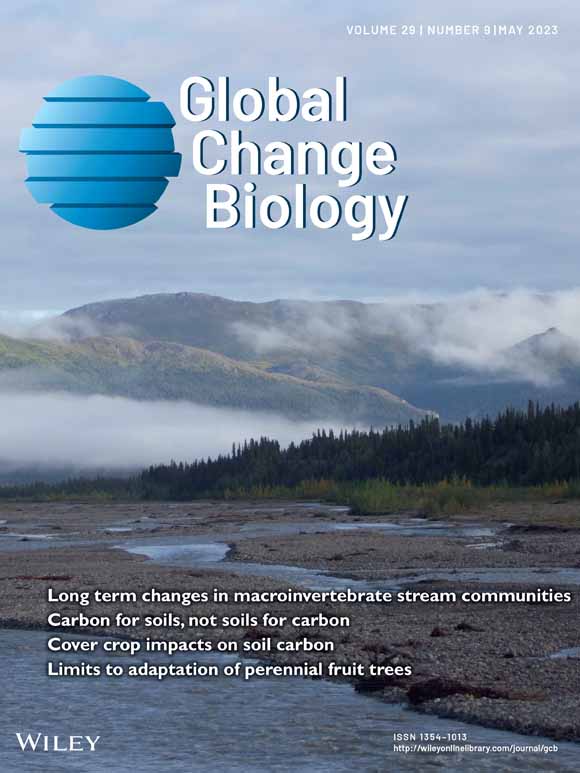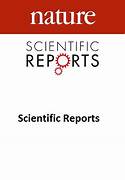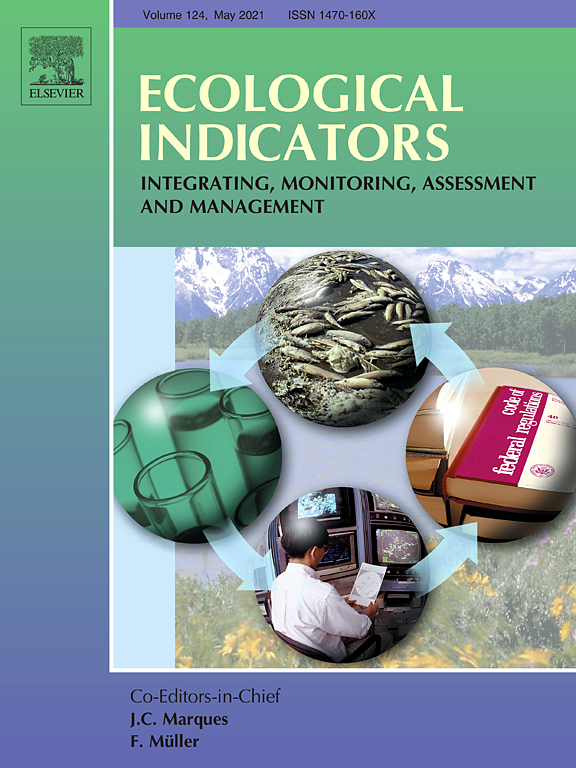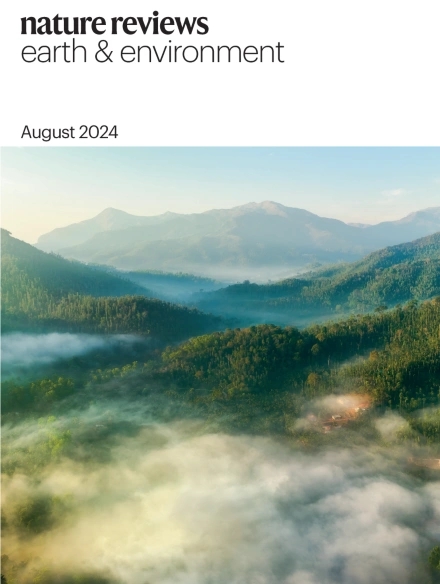- Department:(Dept. 2) Community and Ecosystem Ecology
A modelling approach to assess climate change impacts on taxonomic and functional diversity of European stream macroinvertebrates: Implications for water quality monitoring
The authors used bioclimatic models to predict EU freshwater macroinvertebrate habitats. The future distribution of macroinvertebrates reveals significant regional variations. Functional diversity was projected to change less than taxonomic diversity. Changes in environmentally suitable areas will impact widely used biological indices.

Rapid Eutrophication of a Clearwater Lake: Trends and Potential Causes Inferred From Phosphorus Mass Balance Analyses
In just 10 years, the phosphorus concentration in Lake Stechlin has quadrupled, which has been accompanied by algal blooms, oxygen depletion in the deep water and other signs of eutrophication. The study now shows that the causes are not always to be found in increasing nutrient inputs from the catchment or in re-dissolution processes in the deep areas of the lake, but also in the shallower parts.
Hydropower impacts on riverine biodiversity
The authors discuss the impacts of hydropower on aquatic and semi-aquatic species and how the impacts accumulate spatially and temporally across basins. They recommend the STREAM framework: Systematic planning, Tracking hydropower impacts, Responsive adaptive management strategies, Elimination of hydropower infrastructure, Assessment of socioecological trade-offs, and Multi-actor decision-making.
Shedding light with harmonic radar: Unveiling the hidden impacts of streetlights on moth flight behavior
Freshwater megafauna shape ecosystems and facilitate restoration
This is a review, synthesizing how megafauna shape ecological processes in freshwater ecosystems and discussing their potential for enhancing ecosystem restoration. Restoring freshwater megafauna can revive essential ecological processes like disturbances, trophic cascades, and species dispersal, boosting biodiversity and enhancing nature's contributions to people.
A global systematic map of knowledge of inland commercial navigation effects on freshwater ecosystems
The authors conducted a systematic mapping of the published literature (1908–2021) to provide a global synthesis of the effects of inland navigation on the biotic and abiotic components of freshwater ecosystems. Inland navigation impacts rivers through shipping, infrastructure, and waterway management, causing direct (e.g., waves) and indirect effects (habitat loss, invasions).
Multiple-stressor effects on leaf litter decomposition in freshwater ecosystems: A meta-analysis
By using a meta analytical technique, the authors investigated the effect of multiple-stressors on leaf litter decomposition in freshwaters. The overall interaction between multiple stressors was antagonistic and the magnitude and direction of multiple-stressor interactions depends on factors such as the involvement of macroinvertebrates, habitat type and available resources.
Fish habitat models for a future of novel riverscapes
The authors introduce the concept of novel river landscapes, the limitations of current fish habitat models and opportunities for new models. They outline 3 priority data-driven opportunities that incorporate the novel riverscape concept: fish movement, river behavior, and drivers of novelty that all are integrated into a scale-based framework to guide the development of new models.

Unpredicted ecosystem response to compound human impacts in a European river
The authors have compiled and analyzed the key environmental factors that led to the mass development of the brackish water alga Prymnesium parvum in the Oder in the summer of 2022. The data synthesis shows how multiple stressors combined to allow an alga that normally thrives in stagnant salt water to proliferate en masse in a completely atypical habitat.
Unleashing the power of remote sensing data in aquatic research: Guidelines for optimal utilization
The study aimed to elucidate the tradeoffs for the utilization of remote sensing data in limnological studies with an example based on the estimation of chlorophyll a due to its importance as a water quality indicator. Assessing atmospheric correction and product limitations ensures alignment with the limnological study.









